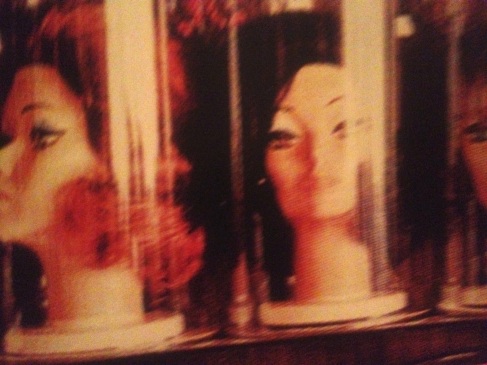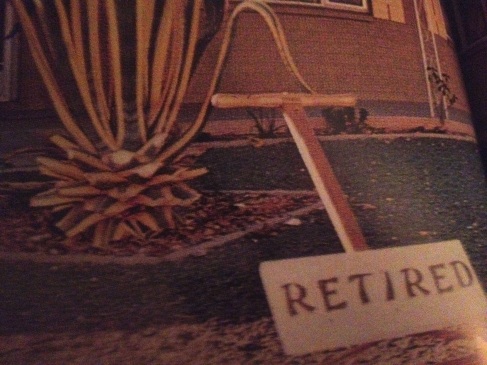










Shangri-La, a fictional, mythological, Asian utopia set in the valleys of the ‘Kunlun’ hills, is the ultimate Orientalist fantasy. In its own, inimitable way, so is Guerlain’s Shalimar. And while the setting of the place, with its Buddhist lamasteries and slow-ageing people who have found a mystical peace may have originated in a novel entitled Lost Horizons from I933, Luang Prabang, the UNESCO World Heritage town in North-central Laos where we have been staying for the last three days (following an ill-fated stay in the capital Vientiane) makes the fiction, almost, a reality.
Widely considered the most perfectly preserved ancient city in South East Asia, Luang Prabang is a tranquil and beautiful place set in a valley at the meeting point of the Nam Khan and Mekong rivers that flow slowly, but inexorably on; a backdrop to a city of glittering, gold wats, elegant French colonial architecture, and lush, tropical vegetation.
At dawn, monks from nearby villages congregate in the streets to collect alms – the food they will eat for the day- from the Buddhist pilgrims who gather from the city and the villages in the hills beyond to hand out the rice and other assorted foods that they then place into the proffered forth bowls of the orange-robed devotees (young; many playing computer games or checking their emails on their iPhones before they join the daily procession), twentieth century realities not distracting from the dream-like vision, in the early morning rain, of a boat, coming slowly in through the pre-dawn mists, sidling up to the river bank in the dark; robe-clad monks stepping off, gently, with their bowls and umbrellas, and ascending the river bank steps to congregate on the steps of the exquisite Wat Xieng Thong temple.







At dusk – this is the rainy season, and fresh, early-hour monsoons would lead to spectactular skies later on in the day – the clouds often formed blue and white pagoda-like formations that played beautifully against the white-dragoned corner pieces of a temple roof; frangipani trees – the flowers everywhere – satin-white; pink and yellow; or dark cerise red – scenting the rain-freshed the air as the flowers fell scattered, and new blooms readied to open.
When night falls in the town and the night market opens, the sound of the frogs and the insects down by the Mekong intensify greatly and the man-made structures, be they French or Laotian, contract; draw in on themselves- the mountains and the ‘out – thereness’ of the surrounding hillsides, deep waters, and forests at this time becoming more vivid.
Rich. Dark.
A dense, nocturnal thickness of velvet.
*
*
Taking the light purple box from my suitcase with its felt and fanned identation, I take Shalimar, lift up the stopper, and apply the perfume to myself in droves. I can sense immediately that it is going to work. And unlike the other perfumes I have worn this holiday – good ones, naturally, which have been acceptable but not quite right – Shalimar at this moment smells like total perfection.
It fits me like a glove.
*
Perhaps it is the air. Giving the scent the expansiveness that she requires:clear, fresh, but heavy in the environs of mountains, the skeins of papaya leaves and their yellow, orchid or hyacinth-like flowers, breathing; gardenias, orchids, roses and jasmine sambac, or perhaps it is the space: Luang Prabang is a city that achieves a beautiful synergy with the natural vegetation surrounding it – feeling as though the buildings, either the exquisitely built temples, or the nineteenth and early twentieth century French colonial town houses that match them perfectly, breathe.
Unwelcome invaders they may have been, the ‘protectorate’ yet another example of wrongful, European arrogance, just one more notch in the long lists of our shameful conquests and misguided exploitations, but one thing the French certainly did do right was to make sure that the place they would be administering would look beautiful and harmonious in a perfect aesthetic fusion of French and Laotienne.
What a brilliantly kept secret this place is (I had never even heard of it until I came here). It is the Kyoto of Laos, its Florence, the streets reminding me more though, almost, of Cambridge: King’s Parade, and King’s College, grand but diminutive, except rather than England and its medieval colleges and green-kept gardens, this is Laos, with its delicately beautiful architecture, its quiet yet artful understatedness : the people here perhaps the calmest, the mellowest, I have ever met.

In this context, Shalimar shines quite beautifully like a jewel, while also blending in artlessly with the night that envelops it. I was almost unable to quite smell it at first, actually, its French, liquid gold and the crepuscular air intermingling like Debussy’s Les sons et les parfums tournent dans l’air du soir. Perhaps I am overstating these Far East gallicisms, but then the influence of France does seem in fact to pervade the entire city – its Laotian heart notwithstanding – from the signs in Lao and French that decorate all the state and municipal buildings, to the patisseries and cafés you find everywhere serving French cakes, baguettes and steaming café au lait.
*
The ‘oriental’ has perhaps been overdone in recent perfumery, from the warm and resinous oudhs, spice-laden ambers and hot, dripping florals you can’t escape from nowadays as niche perfume houses try to desperately outdo each other with their incensed, deep-laden cargoes, whetting the appetites cleverly with their ever more exotic sounding ingredients. Some of them are just too harsh for me, too strong. Yet Shalimar was always the original odalisque, the true precursor of all this – lilting,ingenious- and in my view, in truth, it has never really been bettered.
The genius of the perfume, Jacques Guerlain’s most resounding commercial success, was to enfathom a velvety, rich vanillic accord – skin clinging, suggestive- in a balsamic envelope of tolu, opoponax, and benzoin, a classic ‘oriental’ base then harmonized and refined with a cooler, earth-toned, counterpoint of patchouli and vetiver. Beneath, in the base, lie purring hidden depths of leather, ambergris, incense and civet, the concealed animalic resonances that have led to the perfume’s harlot reputation.
Yet Jacques Guerlain also knew how to keep these heavy-lidded ingredients in check, to preserve their essential elegance, and in Shalimar, romance, and a slice of temperance, is also provided with a powdery floral accord of rose, jasmine,and most importantly iris, fluted up top with a fresh and almost stinging, gourmet prelude of sharp citrus oils of bergamot and lemon.
Although the current version may lack the sheer lickable, delectability of the older parfum extraits (I once had a bottle picked up at a flea market that was almost indecent in the levels of both its beauty and its frank sensuality – so smooth, so made for skin and sex and deep, carnal obsession I am constantly yearning in vain to come across another), the editions available now do still capture the basic Shalimar essence ( I find the bergamot/castoreum combination in the contemporary eau de parfum a little jarring, but find the eau de toilette is still quite eminently sprayable: the end stages always as gorgeous as I remember them).
This perfume, like any well known scent, most certainly does have its detractors.Shalimar does not work on everyone. Many people can never quite get over the ‘soiled baby powder’ aspect of the perfume, its almost tediously decadent exhalations – too sweet, too cloying, too obvious – but for me personally this essential perfume is an absolute classic of perfumery I rarely tire of: a halo; a soft and sweet delicious aura that blurs the edges of harsh reality .
*
*
We are now leaving Luang Prabang, flying high over clouds and about to land shortly again in the capital Vientiane, and I can already sense that our stay in that delightfully hill-cradled place will soon begin to feel like a dream. We spent three delightful days just ambling or cycling round the outskirts, circling the centre, veering off down side streets and alleyways; stopping off whenever we felt like it in temples; roadside eateries; cafés.It was calming and replenishing, just soaking up the city’s positive energy,relaxing; energizing and good for the spirit.
*
The thing I will remember the most about Luang Prabang though is the magnificent Mekong river.
It draws you in, slows you down, commands and drowses the senses. We spent an afternoon yesterday just watching the waters go by, magnificent in their scale and depth, as the sunlight changed on the river’s surfaces, gradually, from milk chocolate brown and pewter; to blinding, illustrious gold.
We just sat there. Lost in thought.
Looking, watching the waters go by aimlessly until the sun passed behind the clouds, shadows fell on the water, and the evening slowly turned to twilight.





















































